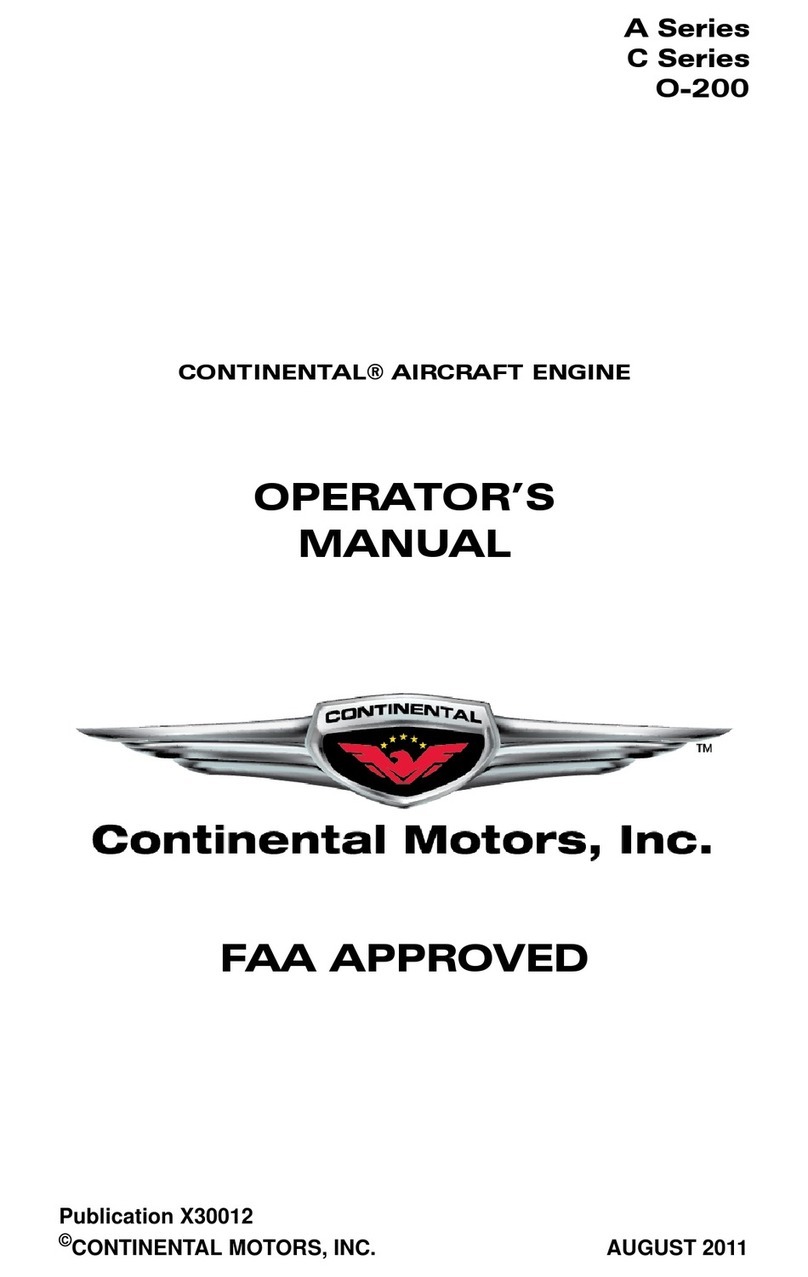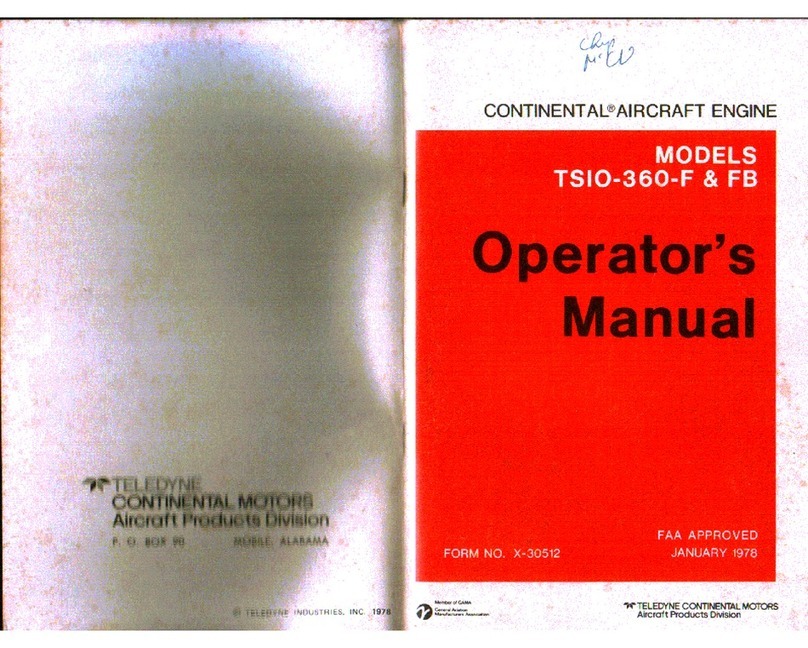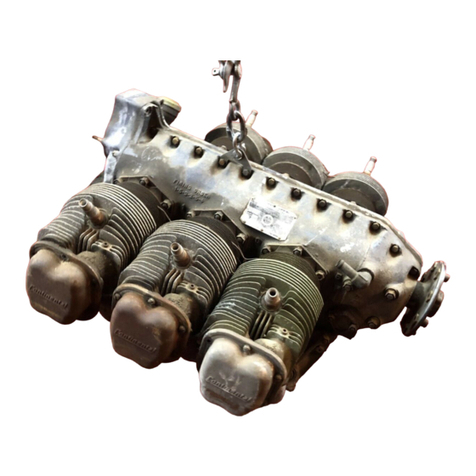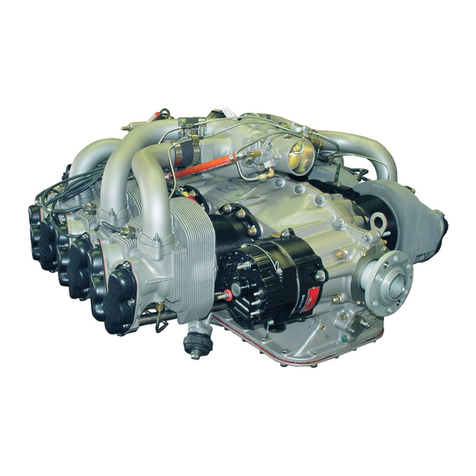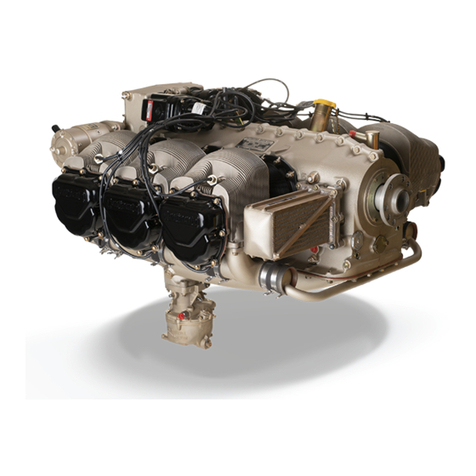CONTINENTAL MODEL GTSIO-520 ENGINE
INTRODUCTION
The Continental model GTSIO-520-D and
Hare
6-cylinder,
fuel-injected, turbocharged, geared engines rated at 375
HP
at
3400
RPM. These air cooled engines have a wet sump oil system, dual
magnetos and continuous-flow injection system. An exhaust driven
turbocharger provides a full supply
of
intake air
as
the
airplane
climbs away from sea level and enters rarified air
at
altitudes.
Turbocharging provides a means for maintaining take-off power from
sea level
to
altitudes up
to
16,000 feet. The fuel injection system
supplies metered fuel
to
the
individual cylinders through injector
nozzles
to
assure
the
proper fuel-air ratio for desired performance at
all altitudes.
DESIGN FEATURES
1. GENERAL
The engines have overhead valves, air cooled, horizontally opposed
cylinders with 5.25 inch bore, 4.00 inch stroke, 520 cubic inch
displacement, and a compression ratio
of
7.5:1. The cylinders have
down-directed exhaust outlets. The propeller flange has six bolt
holes, two dowel pins and a center pilot extension provided for
attaching
the
propeller. The propeller drive shaft gear
is
driven
by
a
reduction gear, which in
turn
is
driven
by
the
crankshaft through a
splined shaft. Provisions are made in the pilot extension for the
hydraulic propeller control oil which
is
supplied internally from the
governor pad. The crankshaft
is
also equipped with pendulum
type
torsional damper weights. The engines have removable
type
hydraulic
tappets. Positive rotation
is
provided for the exhaust valves
by
the
use
of
rotators. Tappets, push rod ends and rocker arm bearings are
lubricated
by
the engine main oil pressure system.
1


